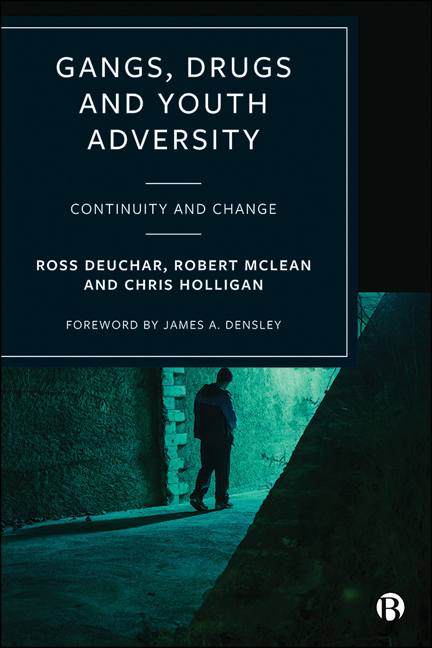Book contents
2 - Violence and Gang Evolution: Scottish Perspectives
Published online by Cambridge University Press: 13 May 2022
Summary
In this chapter, we critically examine recent statistical trends relating to the general issues of violent criminality and offensive weapon-handling in Scotland. We also provide a brief history of street gangs in Scotland's largest city, Glasgow, from their roots in sectarian rivalry to the territorial and recreational focus adopted in the post-industrial era. We examine how knife crime has traditionally been a defining feature of street gangs in Glasgow and of street-oriented violence governed by expectations around masculine honour. Insights into the recorded motivations for knife-carrying and gang violence among young people are explored, drawing from previous research as well as the emerging evidence suggesting that gangs may have evolved in the west of Scotland. The chapter concludes by outlining the methodological approaches that we drew upon for the current study, detailing the sampling methods, access arrangements, geographical locations, ethical protocols and data analysis methods used.
Violent crime rates in Glasgow and wider Scotland
Rates of crime, especially those against the person and, to a lesser degree, vandalism have historically (1950–84) been considerably higher in Scotland than, for instance, in Sweden, which shares many of its population characteristics (McClintock and Wikström, 1990). It may be that feelings of shame and stigmatism among lower-working-class youth cultural groups are greater in areas of Scotland, and through gang membership and activity these feelings are transformed into pride and solidarity (Moran 2015). The youth street gang, Moran (2015) proposes, offers an esprit de corps through expressive violence and symbolic praxis factors that ward off threats such as injury and prison; possibly this phenomenon that transforms shame into pride helps to explain higher rates of violence in parts of Scotland with heightened criminality and youth gangs. Law and Mooney (2012) show how the experience of stigma marginalises working-class youth in Scotland.
McClintock and Wikström's comparative data with Sweden for 1950–84 are particularly striking for violent assaults reported to the police (per 100,000 population), which were found to be significantly higher in Scotland, including for lethal violence. Glasgow was found to have a significantly higher rate of recorded violent crime between 1950 and 1984 than Stockholm and other Scottish cities; unemployment increased more rapidly over this period in Scotland compared with Sweden, as did violent crime.
- Type
- Chapter
- Information
- Gangs, Drugs and Youth AdversityContinuity and Change, pp. 17 - 34Publisher: Bristol University PressPrint publication year: 2021

